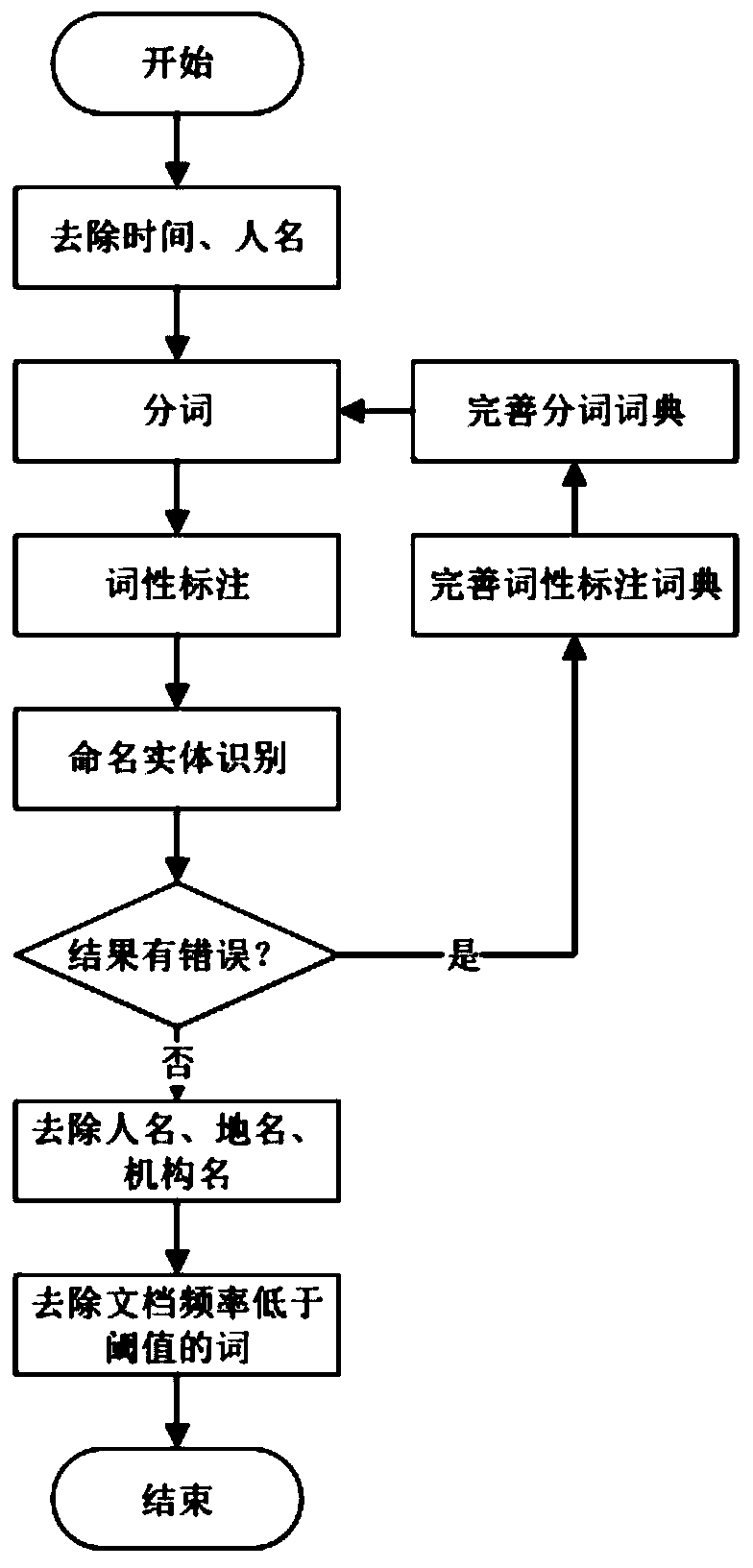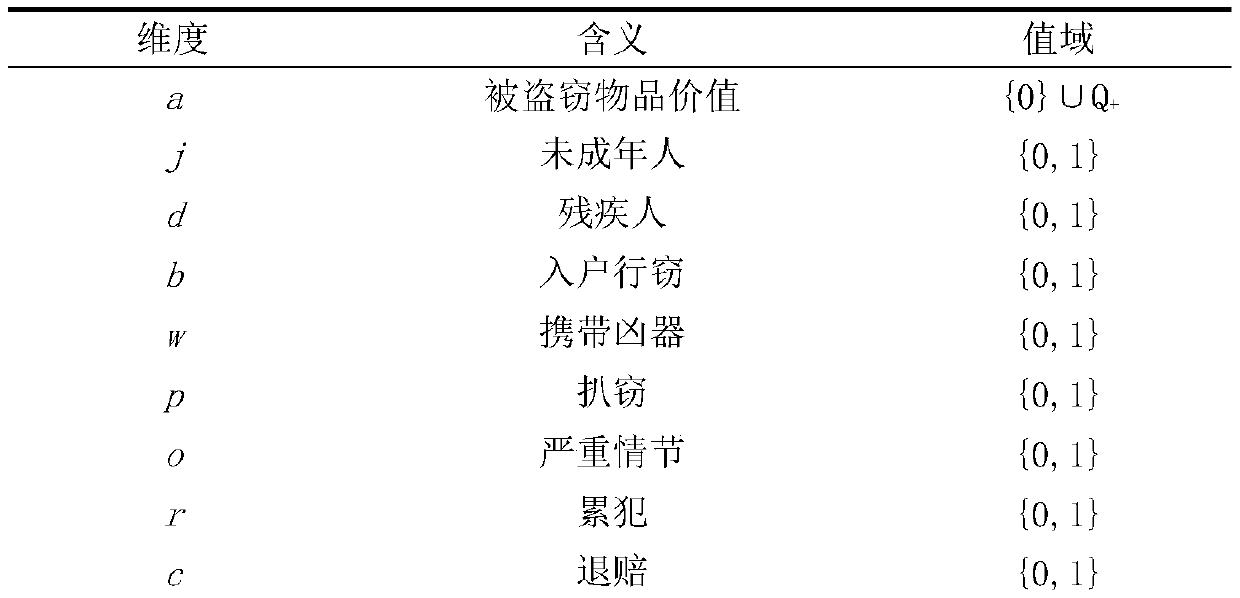Deep learning-based larceny auxiliary sentencing method
A deep learning and theft technology, applied in the computer field, can solve problems such as the inability to realize the semantic representation of the case and the accurate prediction of the sentence for a specific crime.
- Summary
- Abstract
- Description
- Claims
- Application Information
AI Technical Summary
Problems solved by technology
Method used
Image
Examples
specific Embodiment approach 1
[0028] An auxiliary sentencing method for theft crime based on deep learning, such as figure 1 shown, including the following steps:
[0029] Step a. According to the provisions of the criminal law and the sentencing regulations on the crime of theft, combined with the published first-instance judgment of the crime of theft, define the 11-dimensional characteristics of the theft case in terms of the value of the stolen items, the information of the criminal subject, the description of the crime facts, and the judgment result , the 11-dimensional features include the value of the stolen items, whether the defendant is a minor, whether the defendant is a disabled person, whether there is burglary, whether there is a murder weapon, whether there is pickpocketing, and whether there are other serious circumstances , Whether the defendant is a repeat offender, whether there is a circumstance of refund, whether there is a circumstance of surrender, and whether the sentence is sentenc...
specific Embodiment approach 2
[0044] On the basis of the specific implementation mode 1, another implementation-based auxiliary sentencing method for the crime of theft based on deep learning includes:
[0045] Step a. After sorting out the provisions on the specific application of penalties in Chapter 4 of Part I of the "Criminal Law of the People's Republic of China" and Article 264 of Chapter 5 of Part II on the sentencing provisions of the crime of theft, combined with The analysis of the published first-instance verdicts on theft crimes, including the value of the stolen items, information on the subject of the crime, the description of the criminal facts, and the verdict, summarizes the following 11-dimensional features of the theft case, including the value of the stolen items and whether the defendant is a minor whether the accused is a disabled person, whether there is a case of burglary, whether there is a case of carrying a murder weapon, whether there is a case of pickpocketing, whether there ar...
PUM
 Login to View More
Login to View More Abstract
Description
Claims
Application Information
 Login to View More
Login to View More - R&D
- Intellectual Property
- Life Sciences
- Materials
- Tech Scout
- Unparalleled Data Quality
- Higher Quality Content
- 60% Fewer Hallucinations
Browse by: Latest US Patents, China's latest patents, Technical Efficacy Thesaurus, Application Domain, Technology Topic, Popular Technical Reports.
© 2025 PatSnap. All rights reserved.Legal|Privacy policy|Modern Slavery Act Transparency Statement|Sitemap|About US| Contact US: help@patsnap.com



